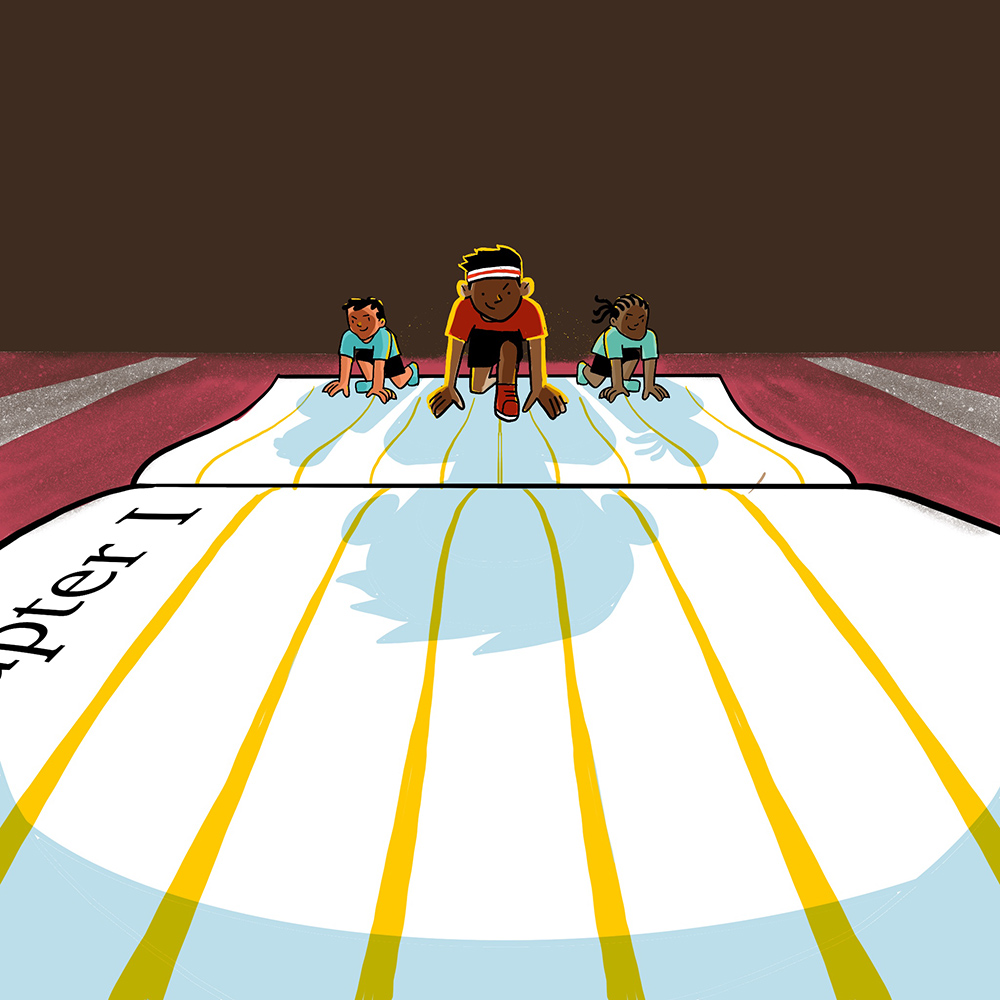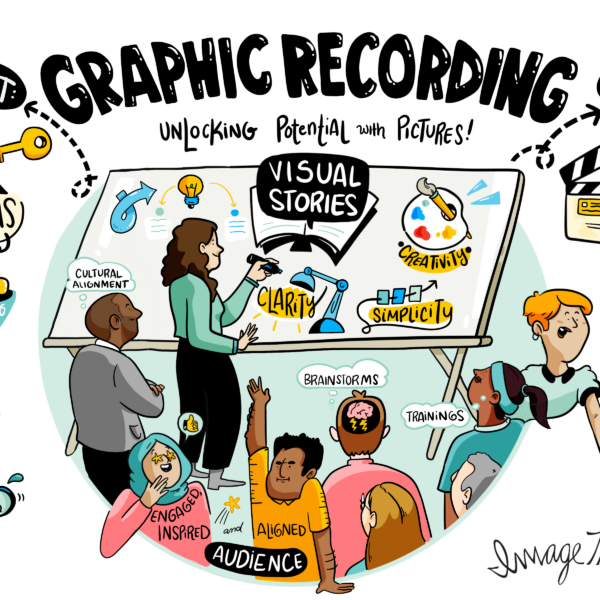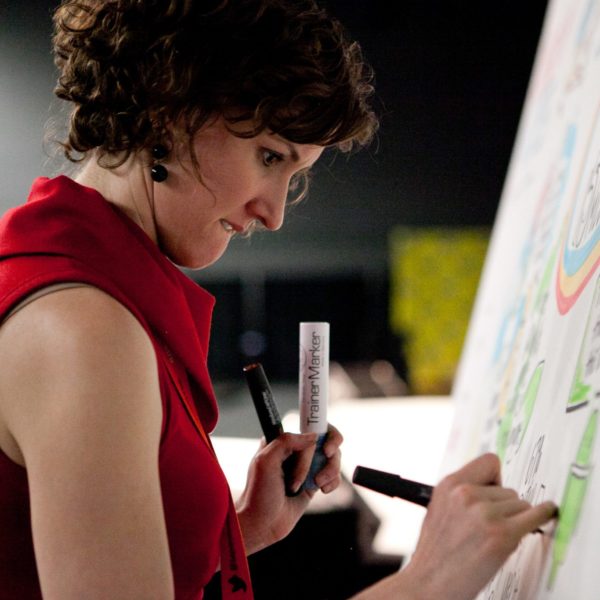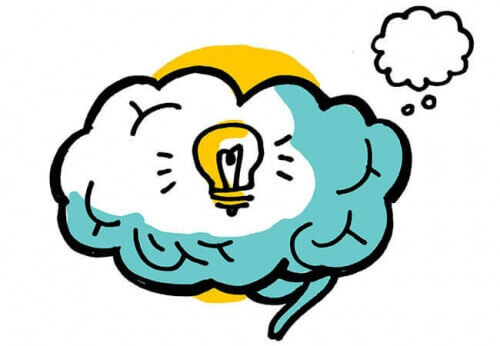Sometimes, it can be difficult for new clients to understand why graphic recording and graphic facilitation is so effective. This article is part of an ongoing series, It’s a Visual World. In it, we explore everyday experiences that showcase the myriad ways our brains work more efficiently with visual input. Look for areas in your daily life for the visual iconography you rely on, then give us a call. Seeing is believing.
You were taught to read wrong.
Well, that’s a bit hyperbolic. But the way we all were taught to read, indeed the way the written word has always been presented, is inefficient.
If you’re reading this as written, in English, then you’re reading each word, left to right, and then top to bottom.
Setting aside arbitrary grammar rules, unique spelling, or the odd, unfamiliar locution that slows you down, you’re probably reading this at about 238 words per minute, the average adult silent reading speed for non-fiction. I’m not making this up.
(Which – for those of you who remember typing class – is a heck of a lot faster than it was keyed into this word processor.)
You’re probably sitting at your desk, or on public transit, or maybe even lying in bed. Still, you’re doing a lot more work than you could be doing.
Not so fast…
During the 1990s there was a boom in interest of speed reading. Infomercials abounded promising that you could ingest War and Peace, Moby Dick, or the Complete Works of William Shakespeare, if you learned a few tricks to up your WPM statistic.
Needless to say, these tactics worked for a few, and made a buck off the many, many more for whom they provided no noticeable comprehension acceleration. (Yes, Howard Berg took my money, and no I’m not bitter about it. Honest.)
Behind most speed-reading programs is the concept of scanning. Trusting that the eyes will absorb images of the text faster than the brain will translate it, and that key concepts will rise to the top and lock into the readers memory.

However, even this method is inefficient. While the brain does collect visual data faster than we can think the words, words are still presented on the page in the same manner, and a lot of energy is expended taking them all in.
Leveraging the neuroscience of vision to read faster
Even though snake oil speed-reading kits didn’t work for everyone, some of the theory behind them was sound. Our brains do receive, and store visual stimuli faster than we can process it, and the effort of reading full words, and scanning across full pages is inefficient.
In recent years, two applications have addressed each of these inefficiencies. Spreeder reconfigures test into single word chunks and displays it back to the viewer at a speed of their selection. By eliminating the movement of the eye across the page, Spreeder accelerates not only reading, but comprehension of large blocks of text. Think of it like playing a podcast at 1.5x speed.

Another method focuses less on eye movement, and more on the text itself. Researchers have discovered that most of us don’t need every letter in order to read a word. Our brains can predict a word based on the first few letters contextually. The Bionic-Reader app, reformats text, bolding these first few letters of each word, allowing you to move your eye through the text more quickly, while still understanding each word.
Both are remarkable, and fun to experiment with.
This is a lot to read. What’s the point?
Why are we talking about how to read better? Isn’t our whole thing pictures?
Well actually [pushes reading glasses up bridge of nose], our whole thing at ImageThink is about helping people work and communicate better through the use of visuals.
We lean into the neuroscientific and evolutionary advantages of visual communication. A massive amount of our brain is dedicated to receiving and translating visual stimuli, and research continually shows that we react and remember things we see better than text or audio information on its own.
So beyond just being fun (who’s the fastest reader in your office?), what science and technology is teaching us about optimizing how we read reinforces our belief in the value of visuals.
Thanks for reading. Ready to engage a visual strategist to make your message memorable?




